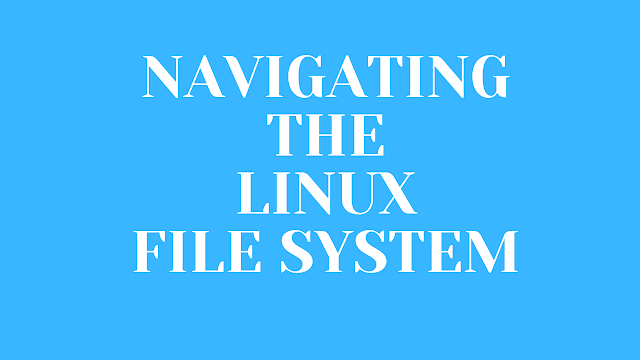As a beginner, understanding the Linux filesystem is a crucial step towards becoming proficient in navigating and managing your system. This guide aims to provide you with a foundational understanding of the Linux filesystem structure, helping you navigate and interact with directories and files.
Welcome to the beginner’s guide to navigating the Linux filesystem! In this, we’ll cover the basics to help you get started on your journey with Linux file systems. Let’s Start with What is a Filesystem?
What is a Filesystem?
A filesystem is a method used by operating systems to organize and store data on storage devices like hard drives and SSDs. In Linux, the filesystem is a hierarchical tree structure, starting from the root directory (“/”) and branching out into various subdirectories.
There are some important special characters in which all have special functionality in the Linux filesystem:
- The dot (.) represents the current directory in the filesystem.
- The dot-dot (..) represents one level above the current directory.
- The forward slash (/) represents the “root” of the filesystem. (Every directory/file in the Linux filesystem is nested under the root / directory.)
- The tilde (~) represents the home directory of the currently logged in user.
This navigation command overview will help you to better understand how all of this works.
Key Directories:
- Root Directory (“/”):
- The top-level directory in the Linux filesystem.
- All other directories and files are organized under the root directory.
- Home Directory (“~” or “/home/user”):
- Each user on a Linux system has a home directory.
- User-specific files and settings are stored here.
- Binaries Directory (“/bin” and “/sbin”):
- Essential system binaries (executable files) are stored here.
/bin: Common user commands/sbin: System administration binaries (usually requires root privileges)
- Configuration Directory (“/etc”):
- Configuration files for system-wide settings are stored here.
- Temporary Directory (“/tmp”):
- Temporary files and directories are stored here.
- Cleared on system reboot.
- Device Directory (“/dev”):
- Device files representing hardware devices and system peripherals.
Navigating the Linux Filesystem:
1. pwd – Print Working Directory:
Displays the current directory path.
pwd
2. ls – List Files:
Lists files and directories in the current location.
ls
3. cd – Change Directory:
Moves to a specified directory.
cd /path/to/directory
4. mkdir – Make Directory:
Creates a new directory.
mkdir new_directory
5. cp – Copy:
Copies files or directories.
cp source_file destination
6. mv – Move/Rename:
Moves files or directories, or renames them.
mv old_name new_name
7. rm – Remove:
Deletes files or directories.
rm file_or_directory
These commands will help you get started with navigating and managing the Linux filesystem. As you become more comfortable, you’ll discover additional commands and advanced techniques to enhance your Linux experience. If you need a details explanation on all these commands, check out our other article in Essential Linux Commands for System Admins.
Now that you have a basic understanding of the Linux filesystem and navigation commands, you’re ready to explore and interact with your system. In the upcoming guides, we’ll delve deeper into more advanced topics and commands to enhance your Linux journey. Happy exploring!
